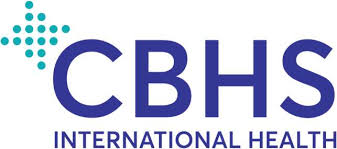Our True ComparisonsTM compare every insurer and every policy with no commercial bias and guarantee you the cheapest policy.
 Allianz Care Australia
Allianz Care Australia
 CBHS International Health
CBHS International Health
How the Australian government regulates private health insurers
In Australia, private health insurers are regulated by the Commonwealth government in accordance with the Private Health Insurance Act 2007 (Cth) and related Rules.
If a corporation wants to register as a private health insurer, it must apply to the Australian Prudential Regulation Authority (APRA) to become registered and comply with the relevant APRA regulations.
As part of this process, the applicant must submit a business plan that includes financial projections (specifically, a detailed budget statement and proposed premium changes for each of the first 3 years of operation).
How the Australian government regulates Private Health Insurance prices
The Australian government regulates health insurers and the government-approved premium on every policy.
In Australia, private health insurers can only change their government-approved premiums on current products once a year. New products can be introduced at any time of year. Insurer promotions can also be varied at any time of year.
Before insurers can increase or decrease their government-approved premiums, they must apply to the Australian government.
They must provide supporting evidence explaining why the change is appropriate.
The process for private health insurers applying to the Australian government for permission to change their premiums involves 10 stages:
Stage 1: The Australian Department of Health and Aged Care releases the application form for private health insurers to apply for premium increases for their products (usually August or September).
Stage 2: Private health insurers submit annual financial returns to the prudential regulator – APRA (usually September).
Stage 3: APRA familiarises itself with the issues and challenges including conducting a full financial analysis (usually October).
During this process, APRA examines all information from the insurers, the industry and the broader financial sector. It undertakes a full financial analysis, including meeting with insurers to discuss how they are managing risks (pricing and capital strategy) as well as current issues they may be facing).
Stage 4: Private health insurers submit applications to increase their premiums (usually in November for premium increases they want to implement on 1 April the following year).
Stage 5: The proposed increases are examined by the Department of Health and Aged Care and by APRA (usually November/December).
Health insurers must obtain approval from the Minister of Department of Health and Aged Care before increasing approved premiums. The Minister must approve an application unless it is satisfied it is not in the public interest.
Stage 6: APRA assesses applications and provides advice to the Department of Health and Aged Care around the increase and:
- the insurer’s ability to maintain capital levels,
- the insurer’s ability to cover the costs of claims,
- the level of uncertainty around issues including membership, claim costs, premium revenue, capital and adequacy of pricing, and
- risks to sustainability.
Stage 7: The minister announces the approved premium changes (usually in December).
Stage 8: Private health insurers must notify policyholders of approved premium changes. They must give enough notice so policyholders can change insurers and/or policies if they want to.
Stage 9: The private health insurers can introduce the premium changes on 1 April of the following year.
Stage 10: If the minister approves the proposed premium change, the private health insurer must notify the Private Health Insurance Ombudsman of:
- the premium that applied before the approval
- the premium that applies after the approval.
The private health insurer must notify the Private Health Insurance Ombudsman about the change either by 1 February or 20 days after the minister approved the change (whichever date is later).
Any changes to the premium are described as a percentage of the current premium.
How the Australian government makes information about policy rules and prices available to consumers
The Australian government makes information about policy rules and premiums available to consumers through a document called a Private Health Information Statement (PHIS).
What is a PHIS?
A PHIS provides a summary of what the policy covers including:
- Hospital Cover
- Extras Cover
- Combined Hospital and Extras Cover
- Ambulance Cover.
A PHIS must also include the government-approved premium before the Private Health Insurance Rebate (Government Rebate), Age-based Discount and Lifetime Health Cover Loading. This is because the way these affect the price of a policy depends on the individual circumstances of those covered by the policy.
A PHIS enables a consumer to compare policies.
Private health insurers must provide an up-to-date PHIS to both consumers and the Australian government
For policyholders
A private health insurer must give an up-to-date PHIS to every adult policyholder:
- when they take out the policy for the first time
- every 12 months
- if they change the rules of the policy.
For the Australian government
A private health insurer must give the Secretary of the Australian Department of Health and Aged Care and the Private Health Insurance Ombudsman a PHIS for:
- new products (on the first day when the insurer makes the product available)
- updated products (as soon as practicable after the statement is updated).
In addition, a private health insurer must notify those government bodies if it changes rules under any PHIS (other than changes approved by the minister under section 66-10 of the Private Health Insurance Act 2007 (Cth): minister’s approval of premiums, because there is already a process for this).
The price a consumer ends up paying for a Private Health Insurance policy may vary from the premium quoted on the PHIS
There are 3 distinct reasons why the price a policyholder actually pays may vary from the premium quoted on the PHIS.
1. Government incentives and penalties: The policy holder/s premium may vary based on:
- Private Health Insurance Rebate (Government Rebate)
- Age-based Discount
- Lifetime Health Cover Loading.
2. Adult dependant variations: Occasionally, premiums may vary for policies depending on the type of group insured. Where a policy covers 2 or more people that include a dependant non-student (aged 18 up to 31) or an adult dependant person with a disability (aged 18 or over), the policy may cost more. For example:
- Family A includes 2 adults and 2 dependants. One dependant is an adult non-student dependant and the other dependant has a disability. Their insurer can charge them more than a family with dependant students for Family health insurance.
- Family B includes 2 adults and 2 dependants. Both dependants are students. Neither of them has a disability. Their insurer can charge them less than Family A for Family health insurance.
3. Insurer promotions: Insurers may offer promotions for new customers, up to the equivalent of 12% of the first-year premium. Promotions may be in the form of discounts, services, waivers, gifts or other such offerings.
Additionally, insurers may offer reduced premiums of up to 12% per year on an ongoing basis if policyholders satisfy certain conditions such as:
- If you pay a premium at least 3 months in advance
- If you pay a premium as part of a payroll deduction
- If you pay a premium by pre-arranged automatic transfer from a bank account or other financial institution
- If you agree to communicate with the insurer via electronic means
- If you are treated as belonging to a contribution group, meaning a group of members approved under the relevant insurer’s rules.
How the Australian government makes the PHIS data available to the public
The website at privatehealth.gov.au, managed by the Private Health Insurance Ombudsman, “provides the PHIS for every insurance policy available from every registered health insurer”.
You can access a PHIS for every health insurance policy currently being sold in Australia at privatehealth.gov.au/dynamic/search/start.
The Australian government provides monthly data files that “contain data for each of the registered health insurers and for every policy published on privatehealth.gov.au”.
Policies change monthly, stay informed
- Insurers regularly update policies, introduce new policies and close policies. Our data is updated monthly.
- We will only send information relevant to you. You can unsubscribe at any time. See our Privacy Policy.






